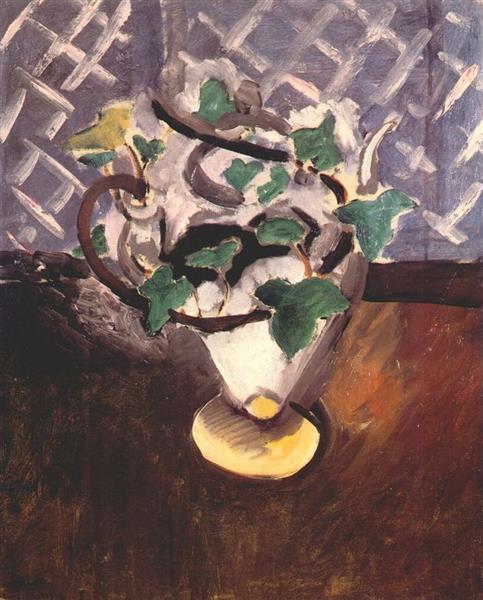Description
Henri Matisse, a fundamental figure in modern art, continues to amaze us with his ability to capture the essence of everyday life through a vibrant and unique visual approach. One of his less discussed but equally representative works is "Woman Reading with Peaches" from 1923, a piece that condenses his mastery in the use of color, light, and compositional structure.
In "Woman Reading with Peaches," Matisse introduces us to an intimate and serene scene. The central figure is a woman absorbed in reading, her posture relaxed and contemplative, her face serene. The woman's posture and the way she holds the book suggest a moment of tranquility and reflection, a pause in the hustle and bustle of daily life. The light illuminating the scene seems to come from a natural source, possibly a window to the left outside the frame, bathing the figure and the objects around her in a warm and welcoming glow.
The use of color in this painting is particularly significant. Matisse employs a palette of soft and harmonious tones, dominated by pastels and earthy shades. The woman's dress is a calm blue, which contrasts with the vibrant color of the fruits on the table. The three simple and voluminous forms of the peaches, with their orange tone, create a chromatic counterpoint with the surroundings, standing out as a small but bright focal point within the composition.
The influence of Fauvism, a movement of which Matisse was one of the main exponents, is evident in this work. Although the intensity of color is not as radical as in his earlier Fauvist works, the underlying technique and the ability to convey emotions through color are still present. The colors are not used solely in a recreational manner but are employed to evoke a particular sensation, to transport the viewer to the contemplation and serenity of the moment.
The composition of the work is another aspect where Matisse demonstrates his genius. The table, seen at a slightly elevated angle, and the objects arranged on it, create a geometric structure that balances the composition and guides the viewer's gaze. The table appears arranged asymmetrically, and the elements on it are minimal but essential, perfectly reflecting the visual economy that Matisse appreciated.
Likewise, Matisse's brushstroke is loose and expressive, but paradoxically controlled. The visible brushstroke does not distract but adds texture and depth, making each element in the work feel tangible, almost palpable. This ability to create texture through color and brushstroke adds another layer of visual richness to the painting.
As we observe "Woman Reading with Peaches," it is impossible not to appreciate the influence that domestic life and everyday objects had on Matisse's work. His paintings often explore the inherent beauty in the common, transforming the ordinary into something extraordinary through his artistic lens.
In summary, Henri Matisse's "Woman Reading with Peaches" is an exquisite demonstration of his ability to combine color, light, and composition in harmony, creating a work that is both visually appealing and emotionally evocative. This painting is a testament to how Matisse, through his unique vision, was able to capture the elegant simplicity of daily life, immortalizing it on canvas with timeless stillness.

